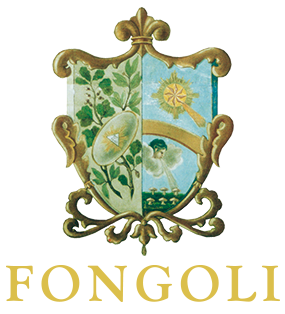SEASONAL TRENDS
2022
The winter with average temperatures but low rainfall exacerbates the water shortage caused by the 2021 drought. Spring was delayed by low late winter and early spring temperatures, which caused a late vegetative start, especially compared to previous seasons. Thanks to this delay, frosts did not damage vegetation but the very low water supply limited vegetative vigour. The green manure, which was mulched in early April for Vigna dei Sospiri and bedded on the Sangiovese of Vigna di Casa Vecchia (the latter being the first vine to bud). There was very little rain until the end of April. As spring ended without any significant rainfall, the summer was also characterized by an almost total lack of rain. In July the cistern well where rainwater is collected and the Satriano ditch dried out completely, treatments were completed with aqueduct water which was also used to water the rooted cuttings planted as replacements in 2022 and 21. The choice was made to protect the soils from the heat with a mulch created by allotting green manure and leaving it in ground cover without being chopped and buried. The scarcity of rain, however, created low compaction of the soil, which did not have to undergo passages with high humidity and was therefore preserved without splitting until the harvest. In this particular year, therefore, minimal tillage was opted for (allurement of green manure without chopping and burying and only one harrowing in the autumn). The dissimilarity in ripening was even more evident than last year, caused by a dissimilarity in sprouting/budding and flowering, as well as a different water availability between the upstream and downstream parts of the vineyard. The harvest began as has become customary just past mid-August with the picking for the sparkling wine bases, compared to the usual, the Sangiovese harvest for Rossofongoli was then slightly postponed, the whites being the varieties that suffered most from the water shortage because of harvest before the September rains. The dissimilarity of ripening in the whites was exploited to obtain fragrance and acidity from the greener grapes and structure and mustiness from the riper ones. For the red grape varieties, Sangiovese was the one that suffered the most from the drought by virtue, as in the case of the white grapes, of the harvest before the autumn rains, the grapes from the older vineyards were particularly interesting from a qualitative point of view and in quantities in the norm, thanks to a deep rooting of the older plants with more spaced planting sixth the mustiness was guaranteed by the rains that fell between September and October. For white wines, therefore, the traditional choice of producing fresh white wines was favored by the dissimilarity of ripening; however, the water shortage caused a significant production loss as it resulted in reduced grape mustiness. The same can be said for Sangiovese as for the white grape varieties, but for the other grape varieties, with relative surprise, it was a vintage with good production and excellent quality so much so that reserves and Fracanton were also produced. A small quantity of Fracanton Selezione was produced with light drying of the grapes. The Rossofongoli was vinified with 50% uncrushed berries.2021
The winter season was characterized by a regular rainfall in line with the average. The strong jump in temperature at the beginning of spring brought a frost in the month of April. Initially underestimated, the frost damaged the buds most of all with the Sangiovese; less so for the later budding varieties. During the spring there was scarse rainfall - through the summer into late September there was no rainfall of any note - a constant wind kept the humidity low. Following this trend towards an extreme climatic dryness, the cover crops we sowed gave a late start to the mulching and tilling. Given the lack of water in the soil we uprooted and turned the cover crops and as an exception, for the first time, we also worked the soils a of the non-cropped rows (trans note - normally every other row is sowed with nitrogen-giving and soil-opening plants and the other left bare) in Vigna della Fonte, Vigna Veterana Trebbiano, Vigna Letizia e Vigna dei Sospiri. We’d prefer to not touch the soil but we worked it to lessen the splitting of the soil and evaporation. The response of the soils to this was great - the plowing allowed the roots to seek the deeper parts where they could find some water and oxygen. The lack of water reduced the vigor of the canes but it never caused the leaves to yellow.The harvest of the whites began the 3rd week of August.
The grapes were in very good condition and surprisingly huge; the older vines and Sagrantino were harvested in October as usual.
The season ended with a big drop in overall quantity, most of all with the reds particularly Sangiovese, but with great quality, however. The reds have a vibrant color with no signs of oxidation, while the whites contained their color and thanks to the earlier harvesting a low ph. We tried to limit the skin contact both for the whites and the reds. The aroma and structure of the whites given the season are in line with the past few years, for the reds more work was done to create a more ready-drinking wine - Rossofongoli and Bicunsio - and for the Sagrantino we need to wait a year before a definitive response, for now they are very interesting in nose and structure.
